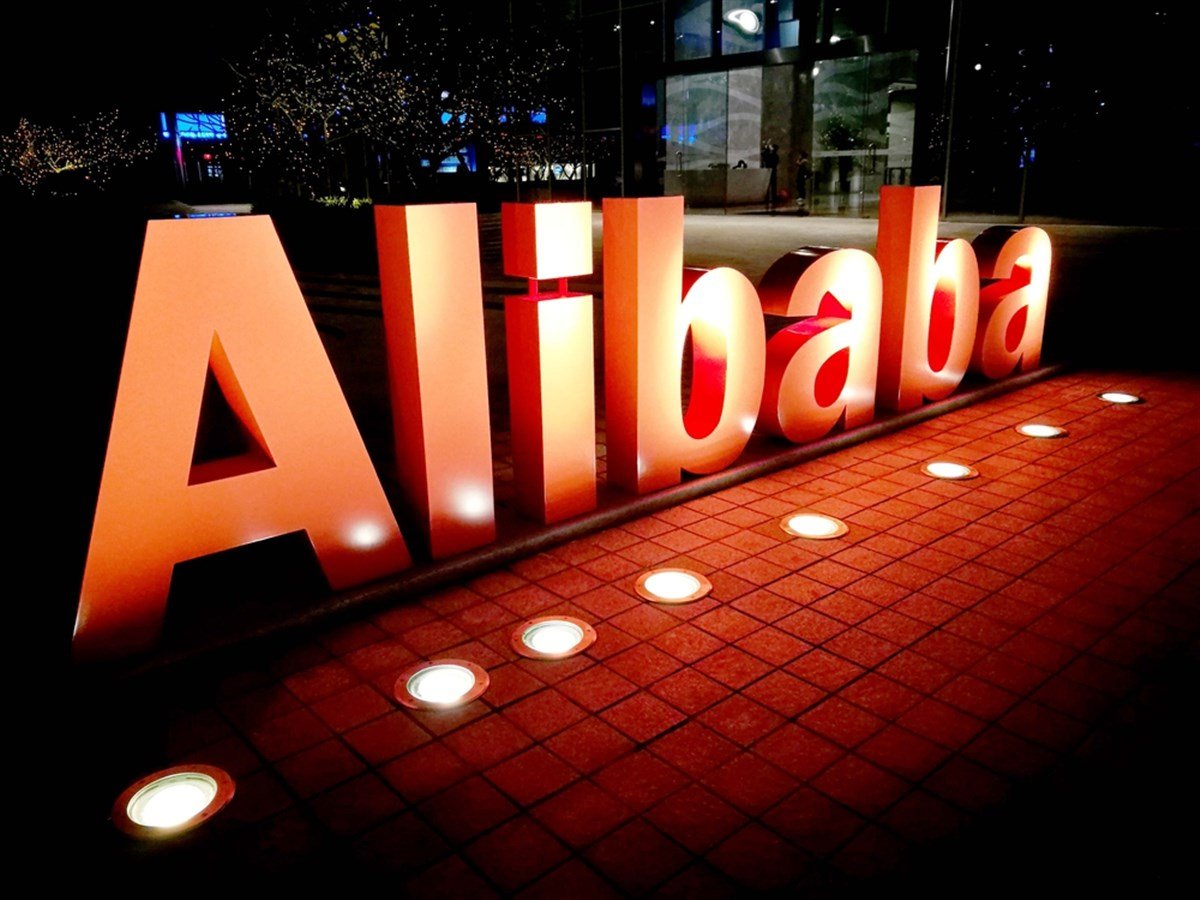
While some investors deemed Chinese stocks as 'uninvestable’ in the past few years, sentiment has likely reached the point of maximum pessimism, a term characterized by Sir John Templeton. This point in the market reflects an environment like no other, where investors can find attractive businesses at ridiculous discounts.
This is where Alibaba Group (NYSE: BABA) could come in handy for a portfolio that carries a multi-year time horizon. When the U.S. economy hit its point of maximum pessimism amid the peak COVID-19 pandemic months, blue chip stocks were the first to make a comeback. As China's preferred blue chip, Alibaba stock could lead China’s comeback.
Alibaba is now competing with Amazon.com Inc. (NASDAQ: AMZN) and technology stocks on more than just cloud computing and data centers. Alibaba’s global reach in its E-commerce branch is now just as entrenched – if not more – as Amazon’s.
While the two behemoths may seem to share the same E-commerce business model, they share two key differences. Amazon acts more as a business-to-consumer (B2C) platform, whereas Alibaba chose to attack the business-to-business (B2B) route.
As the global economy goes online, and various products and brands recognize the benefits of globalization, it could be argued that Alibaba’s role in E-commerce may even be more crucial than Amazon’s.
More than that, Alibaba’s management is betting on global data, as the commodity is now called the oil of the 21st century. Amazon does carry a lot of weight in data centers and cloud computing, though it tends to focus on the U.S. alone.
Alibaba looked to expand its reach with a 50-year horizon, betting on the world's growing regions for data centers, like Asia and EMEA. This is not to say that Alibaba or Amazon is the better company; investors will soon find out that the two offer a completely different value proposition.
Current Alibaba Stock Performance
Recent Stock Price Movements
[content-module:CompanyOverview|NYSE: BABA]
There has been little price action for Alibaba stock, at least in the past few months. The stock has ranged roughly between $70 and $80 a share, a channel it hasn’t broken since September 2023.
Remember that Chinese stocks are at a maximum pessimism point, characterized by sluggish price action. Zooming out, Alibaba reached an all-time high price of $319 a share in 2020, just as the Federal Reserve (the Fed) cut interest rates to answer the COVID-19 threats.
After the U.S. stock market took the spotlight, and China’s government took longer to react to its own economic problems, Alibaba stock fell by more than 80% to a low of roughly $60 a share. On a more technical basis, investors can refer to the average true range (ATR) as a volatility reading for the stock, sort of like the S&P 500’s volatility index (VIX).
From 2022 through most of 2023, Alibaba’s ATR stood around 7%, as the stock hovered between $62 and $120. Starting in the fourth quarter of 2023 and continuing to the present day, the ATR contracted to below 2% as the stock’s trading range tightened to $70 and $80, as mentioned.
What all this means is that global markets have given up on Alibaba stock, and that is where value investors tend to start picking up bargains at maximum pessimism.
Factors Influencing Alibaba’s Stock Performance
As the U.S. technology sector took the spotlight for global markets, with trends in artificial intelligence being all the hype, emerging market stocks (particularly in China) took a back seat. On a macro level, China’s economic performance, specifically the lack thereof, didn’t help Alibaba find its footing.
With inflation contracting from 5.4% in 2020 to disinflation of negative 0.8% in January 2024, consumer discretionary stocks like Alibaba suffered the most. More than that, China’s manufacturing PMI remained below the 50% mark for most of the past two years, leading to nationwide economic contractions.
Recently, the Chinese government took action to help revive its economy. After injecting up to $218 billion into the markets, the government also restricted short-selling and other measures to keep the financial markets afloat during the turmoil.
These actions may have already made their way through the economy, as the PMI had its first expansionary reading (above 50) since April last year. More than that, inflation may have found a footing, as February read a level of 0.7% to break the indicator’s negative streak.
As far as Alibaba goes, management has been doing what it can: buying back shares at an aggressive rate, showing investors how cheap the stock is today.
Financial Health of Alibaba
Analysis of Recent Financial Statements
In their latest quarterly financial results, Alibaba’s management reported a net buyback of $2.9 billion and a net boost to the overall allowance, which now stands at $35.3 billion after a $25 billion increase.
This repurchase program represents roughly 21% of the company’s market capitalization. Historically, companies that buy back up to 5% of their sizes are considered cheap, and investors can gauge the boldly bullish outlook management has for Alibaba.
All this comes with good reason, as the company grew its revenues by 5.1% over the year, with attractive margins. Gross margins rose by 50 basis points (bps) to 40%, and operating margins remained at 17.5%, remaining industry leaders.
Alibaba’s net income is what becomes the most interesting. Because Alibaba invests in financial instruments and stakes in other companies, these holdings are reported on its income statements, and just like everyone else who invested money in Chinese businesses, Alibaba reported markdowns on these holdings.
Up to $493 million in losses were reported for the company. However, investors must remember that these figures are not related to Alibaba’s core business but to its investment ventures.
Investors could relate to Alibaba’s free cash flow (operating cash minus capital expenditures) to gauge the actual business performance better. While net income was RMB 10,737, free cash flow for the period was RMB 57,382.
Of course, all these events affected the company’s report, which showed American depository shares (ADS) earnings per share (EPS) of $0.72, down by 68% from last year’s $2.25. Not to worry, though, as the actual business operations (remember free cash flow) stood the test of a contracting Chinese economy.
Comparison with Industry Peers
Another key player in China’s e-commerce spectrum is JD.com Inc. (NASDAQ: JD). Part of the same nationwide issue, this stock clocked in a negative 32.5% performance over the past year, with Alibaba slightly higher at a net decline of 27.9%.
Focusing on fundamentals, Alibaba is head and shoulders above JD.com, starting with the metric that all value investors look for: Profitability.
Gross margins at JD.com stood at 8.7% in the past twelve months, well below Alibaba’s 40%. More than that, Alibaba’s five-year average return on equity (ROE) shows 13%, even after accounting for the historical lows caused by China’s contraction.
On the other hand, JD.com shows an ROE rate of only 5% on average. Investors may choose Alibaba’s superior profitability over JD.com’s to compound their wealth when the tide turns for the Chinese stock market.
For this reason, Wall Street analysts chose to give Alibaba the bulk of the upside. With a $112.9 price target, valuations call for a 64% upside from today’s price, while JD.com’s $36.7 price target only shows a 45% upside.
Future Outlook for Alibaba Stock
Analyst Predictions and Ratings
A $112.9 price target may be on the conservative end of the spectrum. Analysts at Citigroup Inc. boosted their valuations higher, showing an 80% upside through their $124 price target. Despite almost 100% upside, this valuation is still 61% below Alibaba’s all-time high price.
Analysts don’t seem too excited about Alibaba’s future earnings, however. They currently see a projected decline of 6.7% in the next twelve months, which seems a bit out of touch with the way the Chinese economy is starting to recover.
Chances are these analysts are looking to protect their own skin, avoiding overly bullish projections in case the Chinese market takes longer than expected to recover.
Analysts once thought Alibaba was worth up to $350 a share, back when the Fed lowered rates and Chinese stocks weren’t as forgotten as they are today. With interest rate cuts coming around the corner this year and the Chinese indicators showing a potential comeback, history could repeat itself.
Potential Market Trends and Economic Factors
Speaking of comebacks, there is one clear indicator in China's market, the one that predicts bull markets every time. The spread (difference) between government bond yields and stock market yields is a surefire way to predict the market's next leg.
In the U.S., the S&P 500 paid a yield of up to 2.5% in 2020, while interest rates lowered to 0.25% due to the COVID-19 pandemic. This makes no economic sense, as bonds should always yield higher than stocks.
Higher yields drove investors to the stock market and out of bonds, causing a monster rally that has yet to end four years later. The last time this happened for China’s CSI 300 (their version of the S&P 500) was in 2008.
Today, the proxy for the CSI 300 is found in the iShares MSCI China ETF (NASDAQ: MCHI), particularly its 3.6% dividend yield. The Chinese ten-year government bonds pay 2.3%. As stocks now pay a higher yield than bonds, it is a matter of time – and improving sentiment – before investors flood into Chinese stocks.
Investing in Alibaba is the same as investing in China, as it is one of the largest companies in the nation. Some U.S. mega investors, like Ray Dalio and Michael Burry, have been buying into the region, expecting this yield gap to close.
With manufacturing attempting a comeback and the government following up on its stimulus rounds, the economic tailwinds are set for Alibaba’s return to glory. More than that, Alibaba’s businesses are already on an unstoppable trend in today’s globalized economy.
Investment Considerations for Alibaba Stock
Risks Involved with Investing in Alibaba
Despite all the good news, some risks come with investing in Alibaba. Alibaba’s investment risk comes primarily from the company being in China, as the U.S. actively increases economic punishments to slow down its rival’s growth.
China's investment spectrum is at risk, from technology embargoes to recently proposed tariffs on steel and aluminum. Those who buy into Alibaba must know that the stock could be de-listed from U.S. stock exchanges on any given day, though there is a way around this.
First, there are two likely scenarios: Alibaba stock would trade like any other over-the-counter (OTC) stock, or American investors would receive Hong Kong-listed shares. Either way, investors don’t stand to lose their entire capital, but they do have to live with the risk of a lower valuation or even a delay in liquidation and transfer.
Other than that, investors need to trust the numbers out of China. As Dalio and Burry act as a potential proxy, some may find comfort in these mega-investors buying into the nation.
Competition could be a factor, as Alibaba is not the sole operator of E-commerce and B2B platforms. In the past few months, PDD Holdings Inc. (NASDAQ: PDD) has surpassed Alibaba in size, reporting a blowout quarter with triple-digit revenue growth.
Last but not least, the stock moves a lot. Maybe not now, but its historical ATR calls for daily moves in the 6-8% range, which can be challenging for any investor to stomach.
Opportunities and Growth Areas
Alibaba’s access to data centers around Asia gives it much better insights than its competitors. As these nations become wealthier, middle-class citizens could call upon Alibaba’s services to fulfill their consumption needs.
More than that, cloud computing services facilities have become a focus for Alibaba, especially in this region. As businesses become more advanced, Alibaba’s presence may act as a direct growth factor, pushing the company’s prospects higher.
The stock is so cheap today that on a net asset value (NAV) basis, the absolute floor should be $81.4 a share. This value is calculated by subtracting all debts from the company’s assets and dividing that result by all shares outstanding.
Often used as the absolute lowest valuation, it reflects a company's "liquidation" value, which would be realized in the worst-case bankruptcy scenario.

















